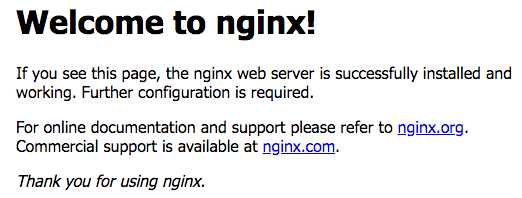Install bitnami/nginx
Installing the Bitnami standalone nginx web server Chart involves us using the helm install command.
A Helm Chart can be installed multiple times inside a Kubernetes cluster. This is because each installation of a Chart can be customized to suit a different purpose.
For this reason, you must supply a unique name for the installation, or ask Helm to generate a name for you.
Challenge:
How can you use Helm to deploy the bitnami/nginx chart?
HINT: Use the helm utility to install the bitnami/nginx chart
and specify the name mywebserver for the Kubernetes deployment. Consult the
helm install
documentation or run the helm install --help command to figure out the
syntax.
Once you run this command, the output will contain the information about the deployment status, revision, namespace, etc, similar to:
NAME: mywebserver
LAST DEPLOYED: Tue Feb 18 22:02:13 2020
NAMESPACE: default
STATUS: deployed
REVISION: 1
TEST SUITE: None
NOTES:
Get the NGINX URL:
NOTE: It may take a few minutes for the LoadBalancer IP to be available.
Watch the status with: 'kubectl get svc --namespace default -w mywebserver-nginx'
export SERVICE_IP=$(kubectl get svc --namespace default mywebserver-nginx --template "{{ range (index .status.loadBalancer.ingress 0) }}{{.}}{{ end }}")
echo "NGINX URL: http://$SERVICE_IP/"
In order to review the underlying Kubernetes services, pods and deployments, run:
kubectl get svc,po,deploy
In the following kubectl command examples, it may take a minute or two for
each of these objects' DESIRED and CURRENT values to match; if they don’t
match on the first try, wait a few seconds, and run the command again to check
the status.
The first object shown in this output is a Deployment. A Deployment object manages rollouts (and rollbacks) of different versions of an application.
You can inspect this Deployment object in more detail by running the following command:
kubectl describe deployment mywebserver
The next object shown created by the Chart is a Pod. A Pod is a group of one or more containers.
To verify the Pod object was successfully deployed, we can run the following command:
kubectl get pods -l app.kubernetes.io/name=nginx
And you should see output similar to:
NAME READY STATUS RESTARTS AGE
mywebserver-nginx-85985c8466-tczst 1/1 Running 0 10s
The third object that this Chart creates for us is a Service. A Service enables us to contact this nginx web server from the Internet, via an Elastic Load Balancer (ELB).
To get the complete URL of this Service, run:
kubectl get service mywebserver-nginx -o wide
That should output something similar to:
NAME TYPE CLUSTER-IP EXTERNAL-IP
mywebserver-nginx LoadBalancer 10.100.223.99 abc123.amazonaws.com
Copy the value for EXTERNAL-IP, open a new tab in your web browser, and
paste it in.
It may take a couple minutes for the ELB and its associated DNS name to become available; if you get an error, wait one minute, and hit reload.
When the Service does come online, you should see a welcome message similar to:

Congratulations! You’ve now successfully deployed the nginx standalone web server to your EKS cluster!